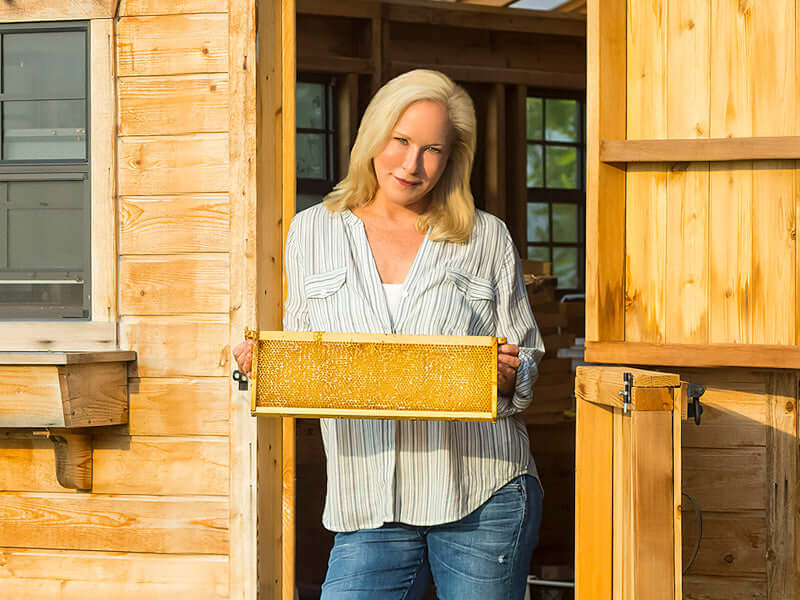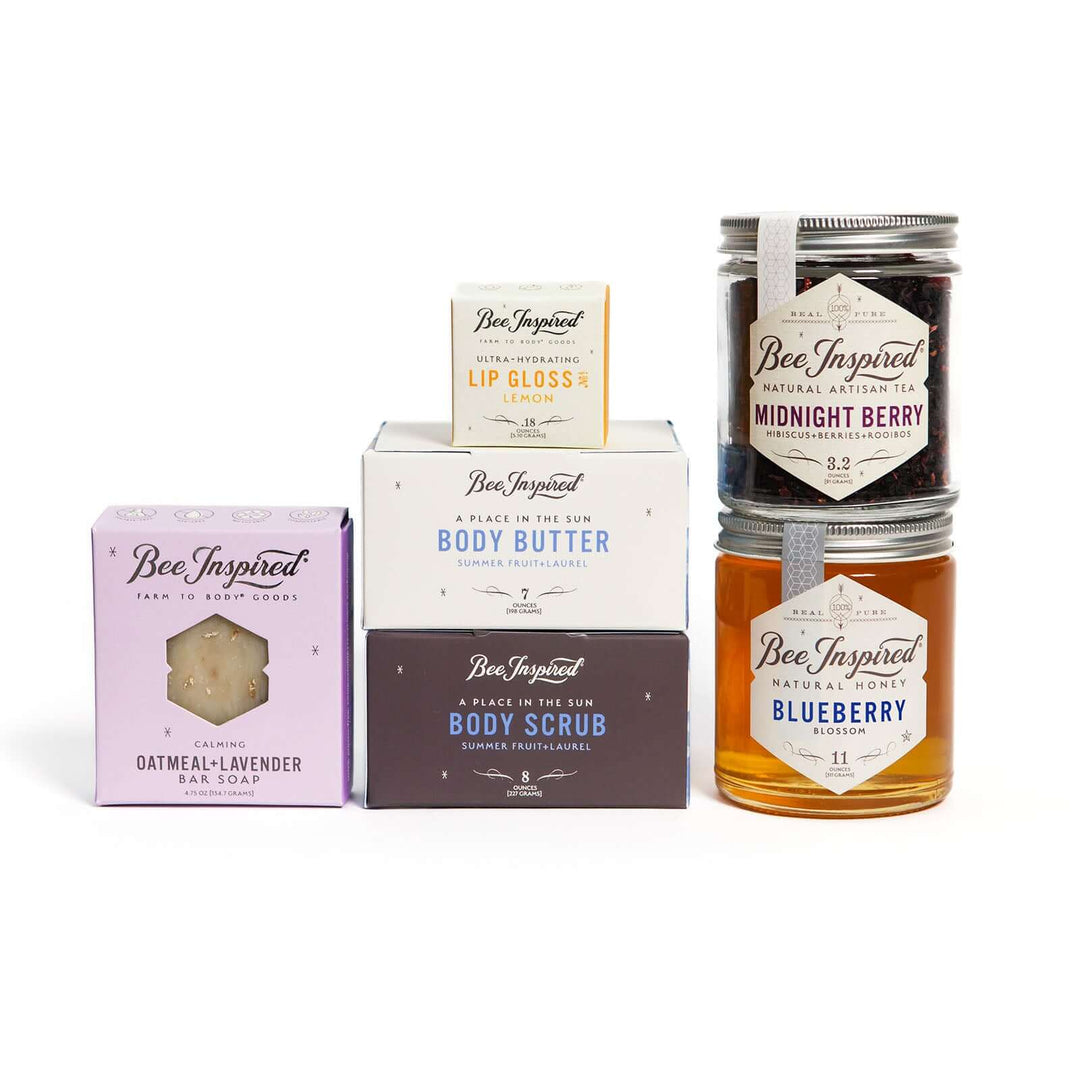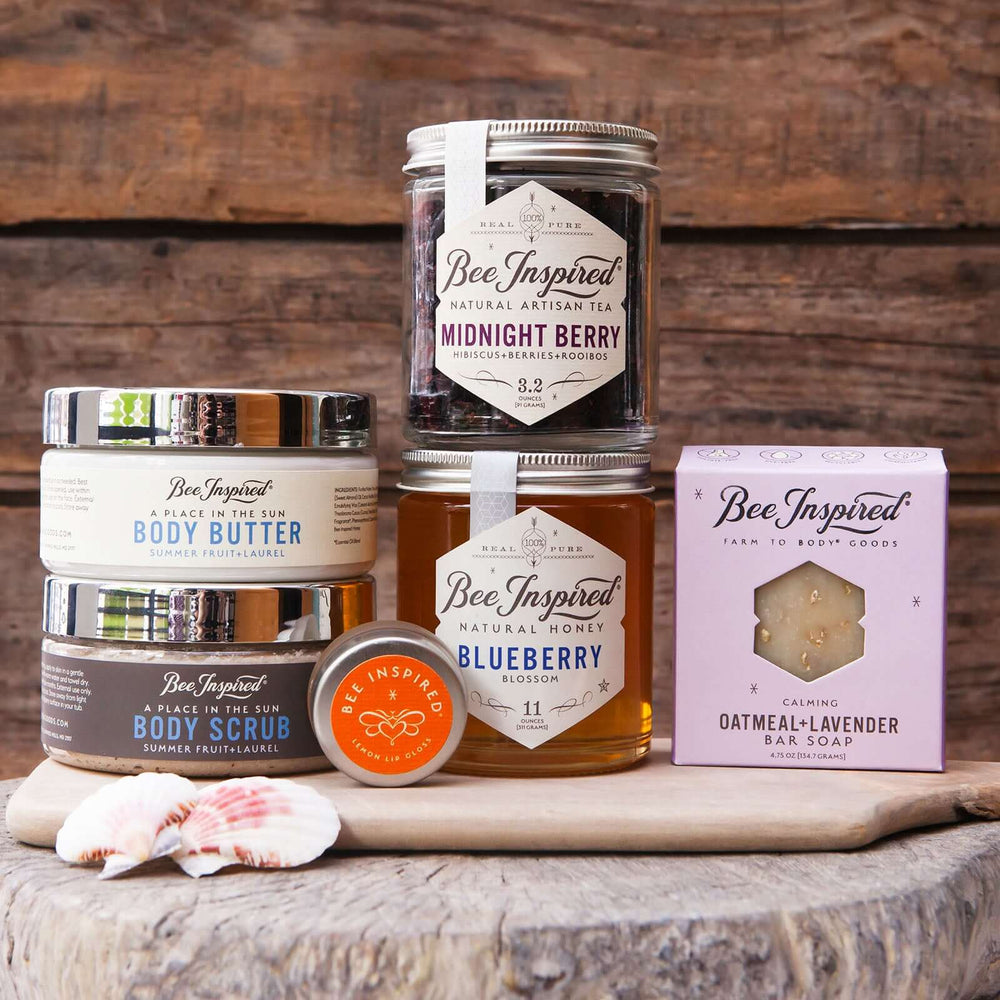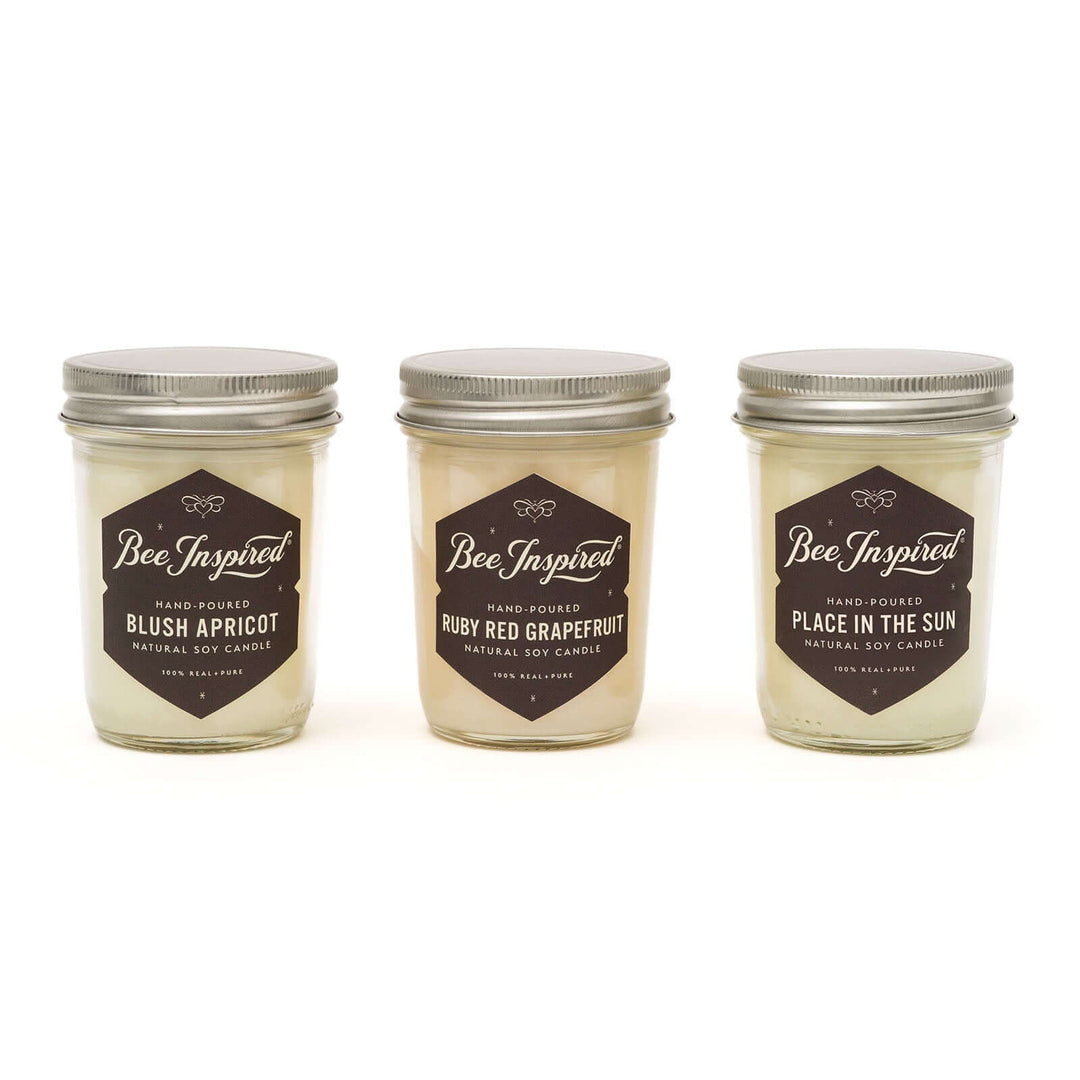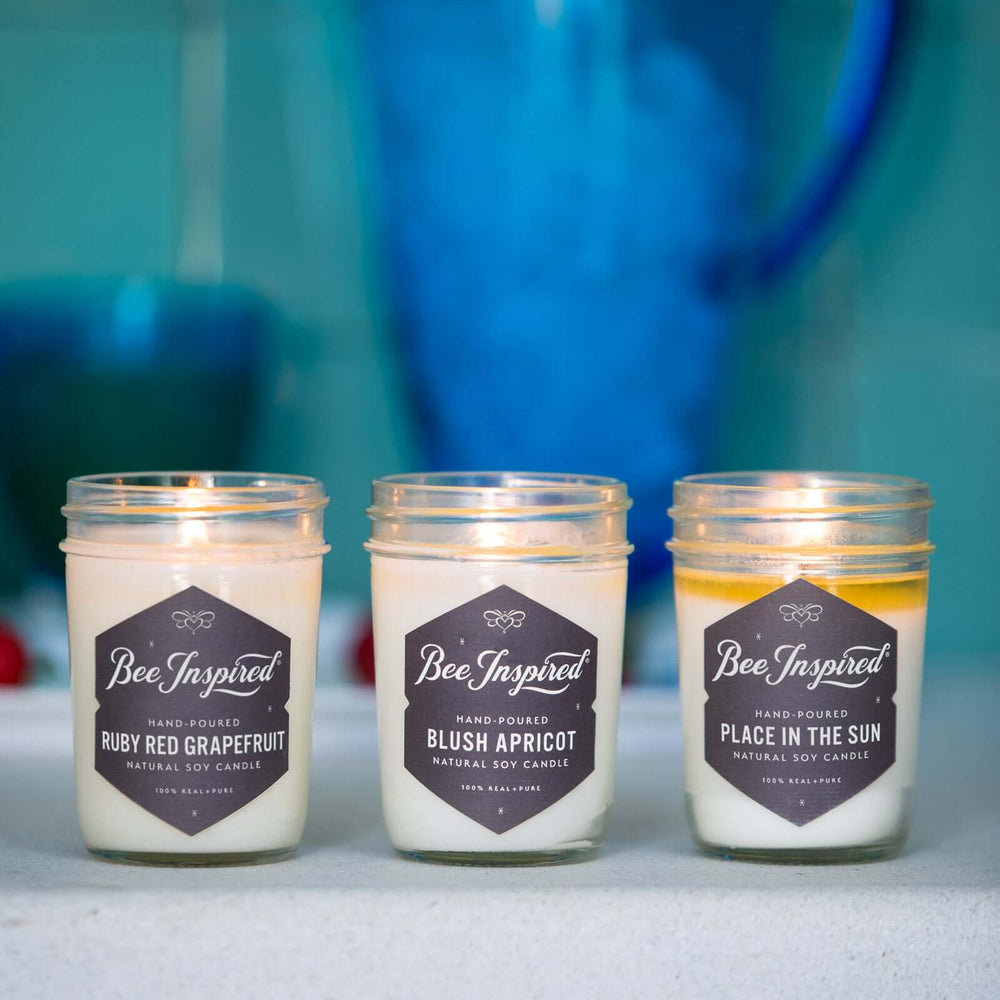Golden, sweet, and straight from nature's pantry—honey has graced our tables for thousands of years. Whether you're drizzling it over Greek yogurt, stirring it into tea, or using it as a natural sweetener, understanding the difference between raw honey and regular honey can help you make the best choice for your family.
Our Raw Honeycomb is 100% straight from the hive, and you can eat the entire thing!
What Is Raw Honey?
Raw honey represents honey in its most natural form—minimally processed and unpasteurized. Harvested directly from the hive, raw honey undergoes only light straining to remove large particles like wax or bee parts while preserving its natural nutrients, enzymes, and authentic flavor profile.
This type of honey may appear cloudy or crystallized, which is completely normal and indicates its unfiltered nature. Raw honey retains beneficial compounds like bee pollen, enzymes, and antioxidants that can be diminished during processing.
Each jar tells the story of the diverse flora that bees visited, creating unique flavor profiles that reflect the local environment.

All of our types of honey are pure, raw, minimally filtered, and Star K certified kosher
Understanding Regular Honey Processing
Regular honey goes through several processing steps that distinguish it from its raw counterpart. The pasteurization process involves heating honey to high temperatures (typically 145°F or higher) to extend shelf life and create a smooth, clear appearance.
This processing method:
- Eliminates natural yeasts that cause crystallization
- Filters out pollen, propolis, and other beneficial particles
- Creates uniform texture and color
- Extends shelf life for commercial distribution
While these processes make honey more shelf-stable and visually appealing, they can reduce some of the natural compounds found in raw honey. Some commercial products may also contain added sweeteners like corn syrup.

Kara Brown maintains a 102-acre Chesterhaven Farm on the Chesapeake Bay where she raises bees
Nutritional Comparison: Raw vs Regular Honey
Both raw and regular honey are primarily composed of natural sugars (fructose and glucose), but their nutritional profiles can differ:
Raw Honey Contains
- Active Enzymes: Natural enzymes that may aid digestion
- Antioxidants: Flavonoids and phenolic compounds
- Bee Pollen: Contains vitamins, minerals, and amino acids
- Trace Minerals: Small amounts of calcium, magnesium, and potassium
- Natural Probiotics: Beneficial bacteria that may support gut health
Regular Honey Retains
- Natural Sugars: Primary carbohydrate content remains intact
- Sweetening Properties: Effective sugar substitute
- Some Antioxidants: Reduced but not entirely eliminated
- Longer Shelf Life: Extended storage capability
Important Note: Honey should not be given to infants under 12 months due to the risk of botulism.
Potential Benefits of Raw Honey
While more research is needed, some studies suggest raw honey may offer certain advantages:
Antioxidant Content: Raw honey contains various antioxidants that may help combat free radicals in the body.
Traditional Uses: Honey has been used traditionally for soothing sore throats and supporting comfort during seasonal challenges.
Digestive Support: Some people find that raw honey's natural enzymes may support digestive comfort.
Seasonal Support: Our Allergy Support Honey Set includes varieties that some people use for seasonal comfort.
These statements have not been evaluated by the FDA. Honey is not intended to diagnose, treat, cure, or prevent any disease.

Our Raw Honey Sticks are perfect for on-the-go energy and can be used as natural pre-workout fuel
Understanding Organic Honey
Organic honey adds another layer of quality assurance. To earn organic certification, honey must come from organically managed hives where:
- Bees forage within a radius free from chemical pesticides
- No chemical miticides are used in hive management
- Processing meets organic standards
It's important to note that not all raw honey is organic, and not all organic honey is raw. Look for labels that specify both "raw" and "organic" if these qualities are important to you.
The Role of Bee Pollen in Raw Honey
Bee pollen, naturally present in raw honey, is collected by bees from flower stamens. This tiny powerhouse contains:
- Essential amino acids
- Vitamins and minerals
- Natural antioxidants
The presence of bee pollen in raw honey contributes to its complex nutritional profile. However, some individuals may be sensitive to bee pollen, so start with small amounts if you're new to raw honey.

Our Allergy Support Honey Set features three varieties that many customers enjoy during seasonal transitions.
Culinary Uses: Raw vs Regular Honey
Both types of honey excel in different culinary applications:
Raw Honey Works Best For
- Hot Beverages: Tea and coffee (add after cooling slightly)
- Cold Applications: Salad dressings and smoothies
- Breakfast Toppings: Oatmeal and yogurt
- No-Heat Recipes: Raw preparations where enzymes remain active
Regular Honey Excels In
- Baking: High-heat applications where consistency matters
- Glazes: Meat glazes requiring smooth application
- Beverages: Iced tea and lemonade
How to Identify Quality Honey
For Raw Honey
- Look for "raw," "unfiltered," or "unpasteurized" labels
- Expect natural variations in color and texture
- Source from local beekeepers when possible
- Check for crystallization—it's a good sign!
For Regular Honey
- Choose "100% pure honey" without added sweeteners
- Avoid products listing corn syrup or artificial ingredients
- Select reputable brands with transparent sourcing
Making the Right Choice for Your Family
The choice between raw and regular honey often depends on your priorities:
Choose Raw Honey If:
- You prefer minimally processed foods
- You want maximum nutrient retention
- You enjoy varied flavors and textures
- You support sustainable, small-scale beekeeping
Choose Regular Honey If:
- You prioritize consistent texture and appearance
- You frequently use honey in baking
- You prefer longer shelf life
- You need budget-friendly options
Safety Considerations
Both raw and regular honey are generally safe for most people, but keep these points in mind:
- Infants Under 1 Year: Should not consume any honey due to botulism risk
- Blood Sugar: Both types affect blood sugar similarly
- Allergies: Those with bee or pollen allergies should exercise caution
- Diabetes: Consult healthcare providers about honey consumption
The Sweet Bottom Line
Whether you choose raw honey or regular honey, both offer the natural sweetness that has delighted humans for millennia. Raw honey provides a closer connection to nature with potentially higher levels of beneficial compounds, while regular honey offers consistency and convenience.
At Bee Inspired Goods, we're passionate about providing high-quality, ethically sourced honey that celebrates the incredible work of bees. Every spoonful represents the dedication of both bees and beekeepers committed to sustainable practices.
Ready to explore the golden world of honey? Browse our collection of artisanal raw honey varieties and taste the difference that quality makes.






